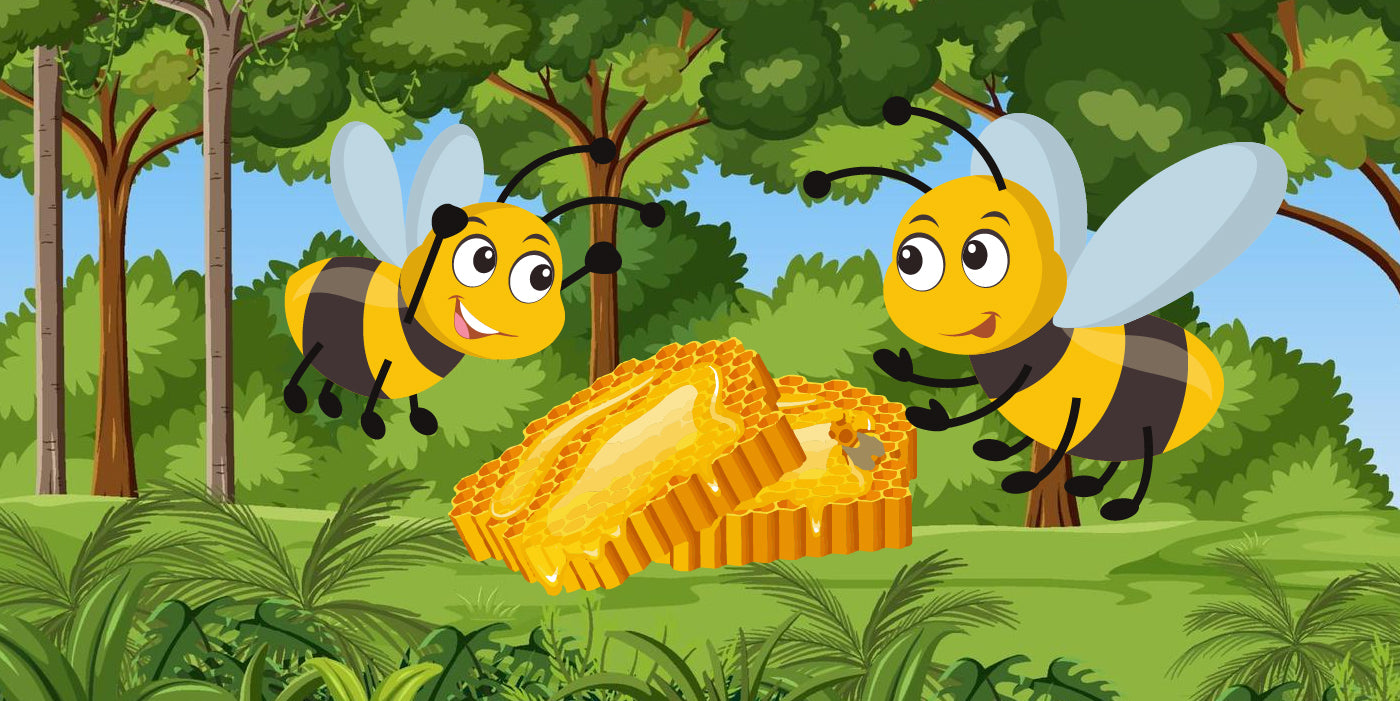
The Secrets of Successful Beehive Splitting
Welcome to the fascinating world of beekeeping, where nature's tiny architects work tirelessly to create the sweet nectar we all love – honey!
Beekeeping is not just about collecting honey; it's a delicate balance of nurturing bee colonies while ensuring their sustainability. One essential aspect of beekeeping is beehive splitting, a technique that allows beekeepers to multiply their colonies and maintain strong, healthy hives. In this blog, we'll uncover the secrets of successful beehive splitting, giving you the knowledge and confidence to embark on this rewarding journey.
Before we delve into the secrets, let's understand why beehive splitting is crucial for beekeepers. Hive splitting serves several vital purposes:
- Colony Multiplication
Beehive splitting allows beekeepers to create new colonies from existing ones, essentially multiplying their bee populations. This is essential for honey production and pollination services.
- Swarm Prevention
Bees have a natural instinct to swarm, which can lead to the loss of half the colony. By splitting hives, you can manage this instinct and prevent swarming.
- Disease Management
Splitting hives provides an opportunity to identify and manage disease within a colony. It allows you to isolate infected bees and minimize the spread of diseases.
Now, let's explore the secrets to successful beehive splitting.
Secret 1
Timing is Everything
The first secret to successful beehive splitting is timing. Timing your split correctly is crucial to ensure the success of both the parent and offspring colonies. Spring is generally the best time to split hives, preferably when the colony is strong and the weather is warming up. This ensures that the new colony has ample time to build up its population and stores before winter arrives.
Secret 2
Healthy Colonies Produce Healthy Offspring
Healthy colonies are more likely to produce healthy offspring. Before splitting a hive, assess its overall health. Look for signs of disease, the presence of a healthy queen, and the availability of sufficient food stores. Only split hives that meet these criteria to give the new colony the best chance of thriving.
Secret 3
Adequate Resources for the New Colony
When splitting a hive, make sure the new colony has enough resources to get started. This includes frames with brood, pollen, honey, and a mated queen. Without these essentials, the new Beekeepers colony may struggle to establish itself. Ideally, the new colony should have at least three frames of brood and sufficient food stores.
Secret 4
The Art of Queen Rearing
A successful beehive split requires the presence of a mated queen in the new colony. You can purchase a queen, but many experienced beekeepers prefer to rear their own queens. Queen rearing is both an art and a science, involving the careful selection of larvae, grafting, and proper mating. Learning the skills of queen rearing will greatly enhance your success in hive splitting.
Secret 5
Swarm Prevention Techniques
While beehive splitting can help prevent swarming, it's also essential to implement additional swarm prevention techniques. Regular hive inspections, providing enough space for the bees, and managing congestion are key practices to prevent swarming and ensure hive health.
Secret 6
Patience and Observation
Successful beekeeping requires patience and keen observation. After splitting a hive, monitor both the parent and new colonies closely. Watch for signs of a successful queen introduction, the presence of brood, and the overall health of the colonies. Patience and observation will allow you to make informed decisions and take corrective actions when needed.
Beehive splitting is a valuable skill that every beekeeper should master. It not only helps increase your bee colony numbers but also contributes to the overall health and productivity of your hives. Remember the secrets we've discussed: timing, healthy colonies, adequate resources, queen rearing, swarm prevention, and patience. With these secrets in your toolkit, you'll be well on your way to successful beehive splitting. So, put on your beekeeping suit, grab your smoker, and embark on this rewarding journey into the world of beekeeping!
General Questions About Beehive Splitting
1. Why is timing important when splitting a beehive, and when is the best time to do it?
Timing is crucial when splitting a beehive because it ensures both the parent and new colonies have the best chance of thriving. The best time to split hives is in the spring when the colony is strong, and the weather is warming up. This timing allows the new colony ample time to build up its population and stores before winter arrives, ensuring their survival and productivity.
2. What resources are essential for a new colony after a hive split?
For a new colony to establish itself successfully after a hive split, it needs several key resources:
- Frames with Brood: At least three frames of brood to ensure a steady growth of the colony.
- Pollen and Honey: Sufficient food stores to support the bees until they can forage on their own.
- Mated Queen: A mated queen to lay eggs and sustain the colony’s population growth. These resources provide the new colony with the foundation it needs to thrive.
3. How can beekeepers prevent swarming when splitting hives?
While hive splitting helps prevent swarming, additional techniques are essential for effective swarm management:
- Regular Hive Inspections: Monitor the hive frequently to catch early signs of swarming.
- Provide Enough Space: Ensure the bees have enough space within the hive to reduce congestion.
- Manage Congestion: Implement methods to manage the hive’s population density, such as adding extra frames or supers. By combining hive splitting with these practices, beekeepers can better manage swarming behavior and maintain healthy, productive colonies.



Leave a comment